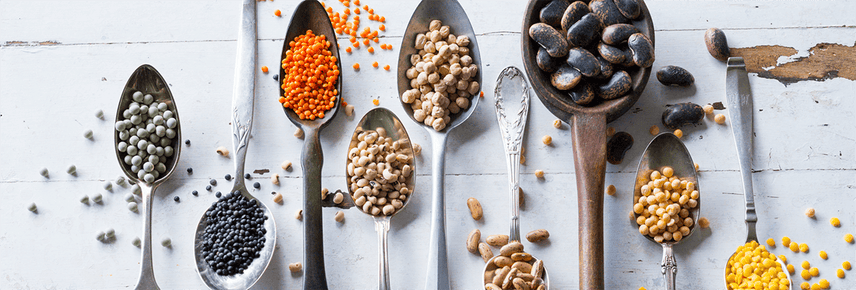Wholegrains are an important part of a healthy diet and are packed with nutrients that'll have you feeling great.
What’s a wholegrain?
Wholegrain foods contain all three layers of the grain, just as nature intended. This includes the:
outer bran layer
inner germ layer
endosperm.
When a grain food is refined, for instance in white bread, the outer layers of the grain are removed and with them many of the fibre, minerals, vitamins and phytochemicals. In fact, up to 70% of these beneficial nutrients can be lost.
While some refined grain products, like refined flour, can then be enriched with some of the vitamins and minerals that are lost during processing, many of the phytochemicals and micronutrients can't be replaced.
Benefits of wholegrains
Wholegrains provide key health benefits, including:
protection against heart disease and stroke
reduced risk of type 2 diabetes
improved bowel health
lower cholesterol and blood pressure
and protection against some cancers.
Wholegrains can also:
help you manage your weight
improve your blood sugar control, creating a feeling of fullness and discouraging overeating
help to fight fatigue and boost concentration.
Nutritionally, wholegrains contain carbohydrate, protein, fibre and a wide range of minerals and vitamins such as magnesium, iron, iodine, zinc, B vitamins (folate, thiamine, riboflavin, niacin) and vitamin E.
Did you know?
Australians don’t eat enough wholegrains. The recent Grains for Health Report showed that Australian intakes of wholegrains are far below the daily recommendation for good health. It also found that our intake of wholegrains is falling – driven by the myth that eating grains can lead to weight gain.
How many wholegrain foods should I eat?
Adults and children should aim for between four and six serves of grain foods a day, at least two thirds of which are wholegrain or high cereal fibre.
What is a wholegrain?
Wholegrain foods include brown rice, barley, rye, traditional rolled oats, bulgur, sorghum, buckwheat, millet, quinoa, corn on the cob, corn kernels, semolina, polenta, wholegrain breads, wholegrain pasta and wholegrain breakfast cereals.
How much is a serve?
A serve of wholegrain would be:
1 slice (40g) of wholegrain bread
½ medium wholegrain roll or flat bread
½ cup of cooked brown rice, barley, buckwheat, bulgur, quinoa
½ cup of cooked porridge (from traditional rolled oats)
2 wholegrain breakfast cereal biscuits
⅔ cup (30g) of wholegrain cereal flakes
¼ cup of muesli
3 (35g) wholegrain crackers.
How can I tell if a packaged food is wholegrain?
Read the ingredients list on the product and look for the following words: wholegrain, whole wheat, whole (other grain), popcorn, brown rice, barley, oats, rye, sorghum, millet or triticale. If these ingredients are listed either first or second, the product will probably be a good source of wholegrains. Some products will declare the percentage of wholegrains in the ingredients list – if they do, aim for products that contain more than 51%.
A simple swap
Swapping refined grains (generally white) for wholegrains (generally brown and grainy) is an easy way to protect your body against chronic disease and to improve your health and wellbeing.
Did you know?
By eating 2-3 serves of wholegrain foods each day, you can reduce your risk of developing chronic disease by 20-30%!
Wholegrain meal ideas
Here are some easy meal ideas to increase your wholegrain intake:
enjoy a wholegrain breakfast cereal made from wholegrain wheat, oats or sorghum or traditional rolled oats made into a porridge
top wholegrain crackers with avocado or natural peanut butter
choose wholegrain breads and wraps for lunch boxes
use long-grain brown rice with a stir-fry or curry
serve your favourite pasta sauce over wholemeal pasta or spaghetti
add pearled barley or quinoa to soups
toss quinoa or buckwheat through salads
use wholegrain flours when making pizza dough, breads, loafs or muffins.
For more information on wholegrains, visit the Grains & Legumes Nutrition Council and see our Recipes section for more recipe ideas.


